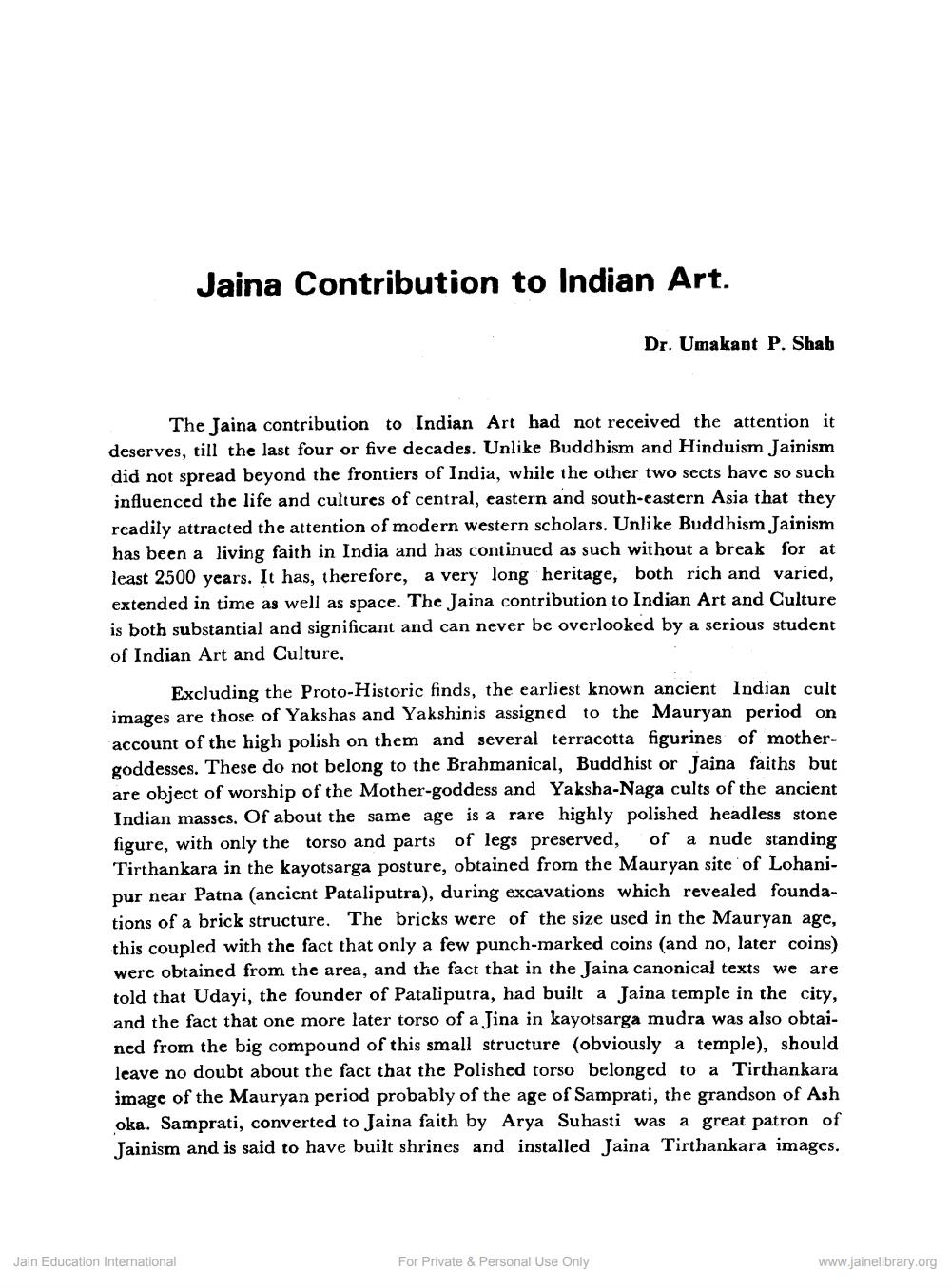________________
Jaina Contribution to Indian Art.
Dr. Umakant P. Shab
The Jaina contribution to Indian Art had not received the attention it deserves, till the last four or five decades. Unlike Buddhism and Hinduism Jainism did not spread beyond the frontiers of India, while the other two sects have so such influenced the life and cultures of central, eastern and south-eastern Asia that they readily attracted the attention of modern western scholars. Unlike Buddhism Jainism has been a living faith in India and has continued as such without a break for at least 2500 years. It has, therefore, a very long heritage, both rich and varied, extended in time as well as space. The Jaina contribution to Indian Art and Culture is both substantial and significant and can never be overlooked by a serious student of Indian Art and Culture.
Excluding the Proto-Historic finds, the earliest known ancient Indian cult images are those of Yakshas and Yakshinis assigned to the Mauryan period on account of the high polish on them and several terracotta figurines of mothergoddesses. These do not belong to the Brahmanical, Buddhist or Jaina faiths but are object of worship of the Mother-goddess and Yaksha-Naga cults of the ancient Indian masses. Of about the same age is a rare highly polished headless stone figure, with only the torso and parts of legs preserved, of a nude standing Tirthankara in the kayotsarga posture, obtained from the Mauryan site of Lohanipur near Patna (ancient Pataliputra), during excavations which revealed foundations of a brick structure. The bricks were of the size used in the Mauryan age, this coupled with the fact that only a few punch-marked coins (and no, later coins) were obtained from the area, and the fact that in the Jaina canonical texts we are told that Udayi, the founder of Pataliputra, had built a Jaina temple in the city, and the fact that one more later torso of a Jina in kayotsarga mudra was also obtained from the big compound of this small structure (obviously a temple), should leave no doubt about the fact that the Polished torso belonged to a Tirthankara image of the Mauryan period probably of the age of Samprati, the grandson of Ash oka. Samprati, converted to Jaina faith by Arya Suhasti was a great patron of Jainism and is said to have built shrines and installed Jaina Tirthankara images.
Jain Education International
For Private & Personal Use Only
www.jainelibrary.org




